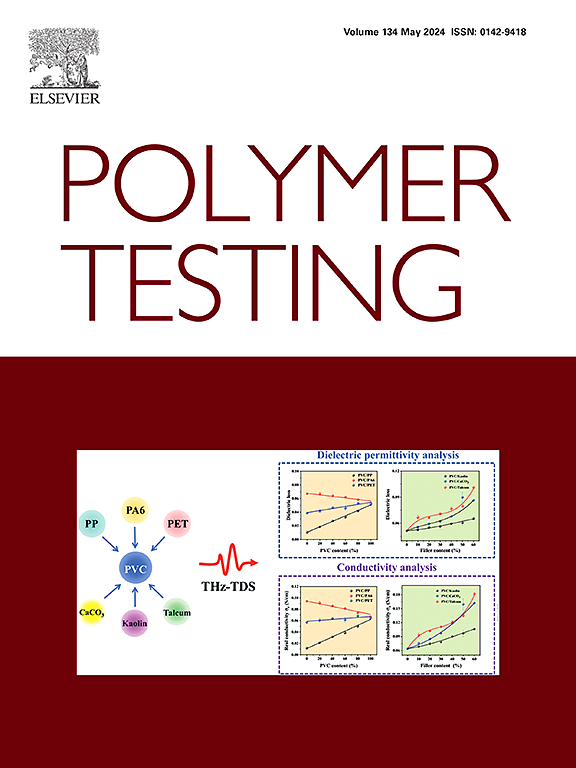复合材料层设计中复杂微观结构模型力学行为模拟及多尺度性能分析
IF 5
2区 材料科学
Q1 MATERIALS SCIENCE, CHARACTERIZATION & TESTING
引用次数: 0
摘要
为了研究玻璃纤维增强聚合物复杂的微观结构特征对复合材料宏观性能的影响,利用复杂微观结构的详细特征,对复合钢板弹簧进行了多尺度分析。首先,建立了具有代表性的包含界面结构的体积元,并对其力学性能和微观损伤行为进行了预测。随后,通过多向拉伸试验和扫描电镜证实了预测力学行为的有效性。在此基础上,提出了一种结合界面损伤模式和层间堆积比的多尺度分析方法,深入研究了复合材料板弹簧的微观结构与层间堆积角的关系。为了优化钢板弹簧的力学性能,进行了复合层的设计。分析表明,材料微观结构的变化导致聚合物基复合材料的主要承重成分发生变化,从而影响板簧的结构性能。最后对复合钢板弹簧的疲劳寿命进行了预测,并对预测结果的准确性进行了验证。本文章由计算机程序翻译,如有差异,请以英文原文为准。

Simulation of mechanical behavior and multi-scale performance analysis of complex microstructural models in composite material layer design
To examine the impact of the intricate microstructural features of glass fiber reinforced polymer on the macroscopic performance of composite materials, a multi-scale analysis was carried out on the composite leaf spring, utilizing the detailed characteristics of the complex microstructures. Initially, a representative volume element incorporating an interface structure was developed, and its mechanical properties along with microscopic damage behaviors were predicted. Subsequently, the validity of the predicted mechanical behavior was corroborated through multi-directional tensile tests and scanning electron microscopy. Building upon this, a multi-scale analysis approach integrating interface damage modes with layer stacking ratios was proposed, providing a thorough investigation into the relationship between the microstructure and stacking angles of composite leaf springs. The design of composite layers was implemented to optimize the mechanical performance of the leaf springs. The analysis reveals that changes in the material microstructure lead to a shift in the primary load-bearing component of the polymer-based composite materials, thereby affecting the structural performance of the leaf spring. Ultimately, the fatigue life of the composite leaf spring was predicted, and the accuracy of these prediction results was validated.
求助全文
通过发布文献求助,成功后即可免费获取论文全文。
去求助
来源期刊

Polymer Testing
工程技术-材料科学:表征与测试
CiteScore
10.70
自引率
5.90%
发文量
328
审稿时长
44 days
期刊介绍:
Polymer Testing focuses on the testing, analysis and characterization of polymer materials, including both synthetic and natural or biobased polymers. Novel testing methods and the testing of novel polymeric materials in bulk, solution and dispersion is covered. In addition, we welcome the submission of the testing of polymeric materials for a wide range of applications and industrial products as well as nanoscale characterization.
The scope includes but is not limited to the following main topics:
Novel testing methods and Chemical analysis
• mechanical, thermal, electrical, chemical, imaging, spectroscopy, scattering and rheology
Physical properties and behaviour of novel polymer systems
• nanoscale properties, morphology, transport properties
Degradation and recycling of polymeric materials when combined with novel testing or characterization methods
• degradation, biodegradation, ageing and fire retardancy
Modelling and Simulation work will be only considered when it is linked to new or previously published experimental results.
 求助内容:
求助内容: 应助结果提醒方式:
应助结果提醒方式:


